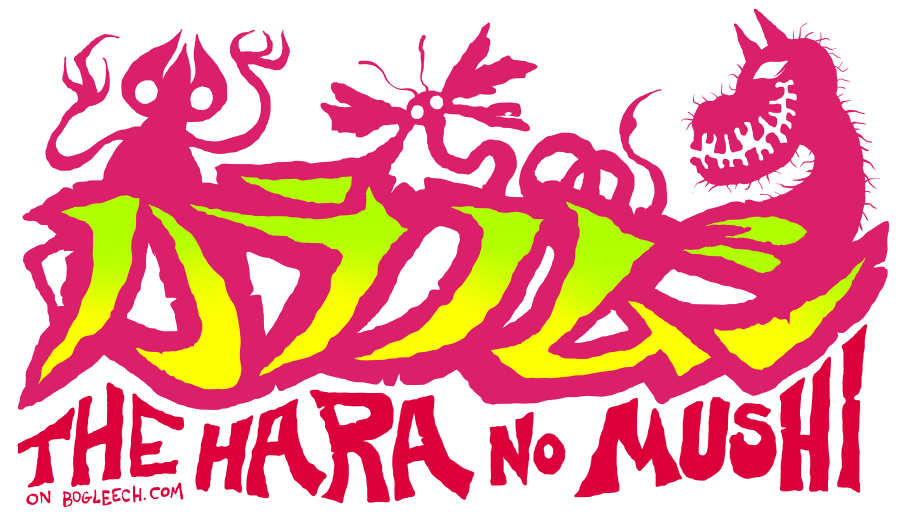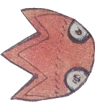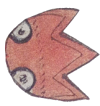
DAY TWENTY FOUR: KEKKAI
("Blood Clot")
Written by Jonathan Wojcik, Researched and Translated by Rev Storm

This is another "blob with worms" entry, and this one is said to have an outer surface of hardened blood which is supposed to appear white, though in the illustration it looks dark blue. Lining its interior are supposedly up to 400 smaller bugs, and it is supposedly also known as the "house bug," because "as many people as may be living in a house, there are that many and more bugs living inside this bug." These are described as being "chestnut-like," and that they may cause a variety of diseases. The cure is said to be boiled frankincense, which will drive the little bugs out of the body. Once there, they must be covered in frankincense once more to drive them outdoors.
Design Review:
This one is interesting because it simply looks like a number of parasitic cysts embedded in tissue, which is probably exactly what it was inspired by. We've seen a lot of parasites that can do this, but we've never talked about the most dreadful of the bunch. I bet you can't wait!
TODAY'S REAL WORLD "PARASITE:"
Cordylobia anthropophaga

We've actually already covered most of the worms that make multiple, tiny cysts in our internal tissues, with one particularly dramatic example coming up later, but there certainly is a parasite that can fill your outer tissues with lots of little, clustered white "bugs," and some of you may already be familiar with them from your most masochistic youtube binges. Anthropophaga, which means "human eater" by the way, is an insect also known as the tumbu fly, putzi fly or mango fly. This has lead to the larval stage being referred to in more recent years as the "mango worm," though they were actually distinguished from adults by the name cayor worm in older literature.
This is another parasite that doesn't typically infect humans, most commonly attacking dogs and other animals that usually sleep directly on the ground. This is because the adult female lays her eggs in moist soil, especially if it is contaminated by feces or urine. She may deposit as many as 300 of them at a time, and the larvae stick close together as they wait for something to disturb the soil. This will send the nearly microscopic maggots surging quickly to the surface, and should they find soft, warm flesh, they immediately latch on with their oral hooks and dig themselves under the skin.
Under the skin, each worm triggers the development of a furuncle around itself, feeding on the pus and other fluids that naturally fill a boil or pimple. Since it needs to breathe, it forms a tiny opening for its snorkel-like tail, and can also excrete its waste through this hole. The condition is not technically dangerous, but as the larvae grow, the sores go from merely itchy to steadily painful until they leave of their own volition to pupate and mature.
While humans aren't the intended target of "mangoworm," infections do happen, and most commonly because the fly finds damp clothing as attractive to egg-laying as soil, especially damp clothes that have been hung out to dry. People who live within its native African range have obviously known better for generations and seldom have to deal with these parasites, but when they do afflict humans, it's typically those as naive as small children and especially tourists.
NAVIGATION:









































































































